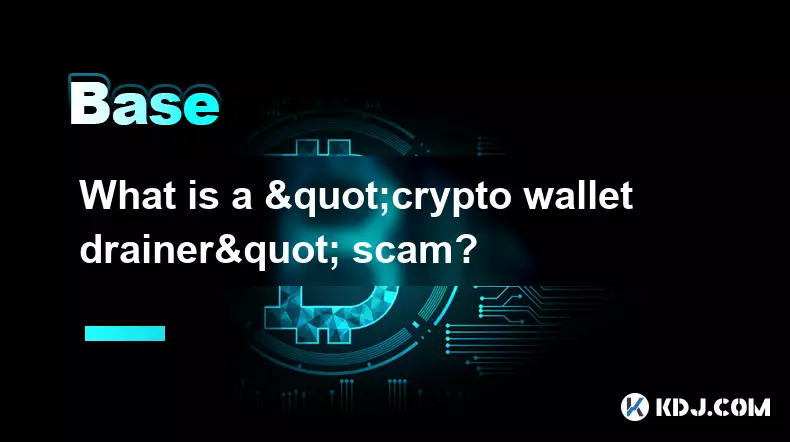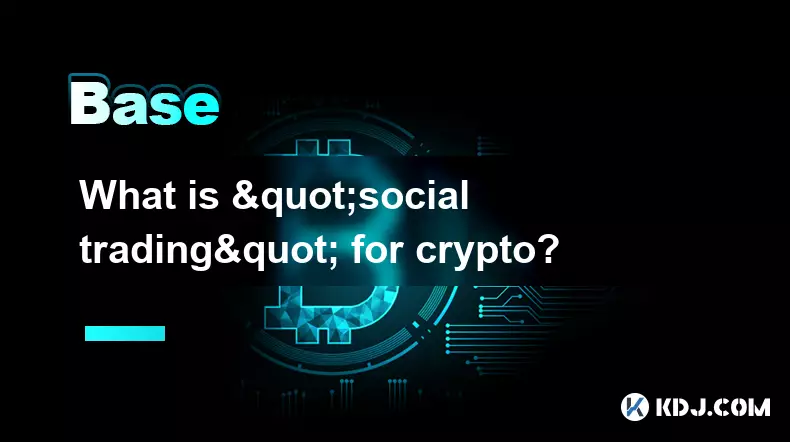-
 Bitcoin
Bitcoin $112000
1.27% -
 Ethereum
Ethereum $4464
4.15% -
 XRP
XRP $2.867
2.86% -
 Tether USDt
Tether USDt $1.001
0.04% -
 BNB
BNB $859.7
1.52% -
 Solana
Solana $210.5
5.20% -
 USDC
USDC $0.9999
0.01% -
 Dogecoin
Dogecoin $0.2185
3.84% -
 TRON
TRON $0.3410
1.36% -
 Cardano
Cardano $0.8404
3.84% -
 Chainlink
Chainlink $23.80
4.08% -
 Hyperliquid
Hyperliquid $45.96
4.22% -
 Ethena USDe
Ethena USDe $1.001
0.02% -
 Sui
Sui $3.382
4.80% -
 Bitcoin Cash
Bitcoin Cash $591.2
2.62% -
 Stellar
Stellar $0.3652
1.68% -
 Avalanche
Avalanche $25.35
7.33% -
 Cronos
Cronos $0.2796
10.18% -
 Hedera
Hedera $0.2213
4.12% -
 UNUS SED LEO
UNUS SED LEO $9.520
-0.20% -
 Litecoin
Litecoin $112.9
2.75% -
 Toncoin
Toncoin $3.181
1.89% -
 Shiba Inu
Shiba Inu $0.00001252
2.08% -
 Polkadot
Polkadot $3.882
3.71% -
 Uniswap
Uniswap $9.714
3.34% -
 Bitget Token
Bitget Token $5.004
0.70% -
 World Liberty Financial
World Liberty Financial $0.2185
-1.32% -
 Dai
Dai $0.9999
0.01% -
 Monero
Monero $269.1
3.07% -
 Aave
Aave $326.0
5.80%
What is a "crypto wallet drainer" scam?
Crypto wallet drainer scams exploit phishing, malware, and fake dApps to steal funds; always verify sites, limit token allowances, and use hardware wallets for security.
Sep 03, 2025 at 05:36 pm

Crypto Wallet Drainer Scams: An Overview
1. A crypto wallet drainer scam refers to a malicious attack where hackers gain unauthorized access to a user’s digital wallet and transfer all the funds to their own accounts. These scams often exploit vulnerabilities in wallet security, phishing tactics, or fake software to trick users into revealing private keys or seed phrases.
2. The mechanism behind these scams typically involves social engineering. Attackers may create counterfeit websites or applications that resemble legitimate crypto platforms. When users interact with these fakes, they unknowingly provide access credentials or sign transactions that drain their wallets.
3. Another common method is the use of malware. Once installed on a victim’s device, this software can monitor clipboard content, detect when a wallet address is copied, and replace it with the attacker’s address. As a result, any transaction the user attempts to make sends funds to the scammer instead.
4. Wallet drainers are especially effective because blockchain transactions are irreversible. Once funds are transferred, there is no centralized authority to reverse the transaction or recover the assets. This makes prevention the most critical defense.
5. These scams are not limited to novice users. Even experienced traders can fall victim if they fail to verify URLs, download untrusted browser extensions, or interact with suspicious smart contracts.
Common Tactics Used by Drainers
1. Phishing links are among the most widespread tools used in wallet drainer attacks. Fraudsters send messages via email, social media, or messaging apps that direct users to fake login pages. These pages mimic popular wallets like MetaMask or exchanges such as Binance.
2. Malicious browser extensions are another vector. Some extensions claim to enhance wallet functionality but are designed to steal session tokens or inject code into dApps. Once installed, they operate in the background without the user’s knowledge.
3. Fake airdrops or NFT giveaways lure users into connecting their wallets to fraudulent websites. Upon connection, attackers request permission to sign a transaction, which may appear harmless but actually grants them full access to drain the wallet.
4. Clipboard hijacking scripts are often embedded in compromised websites. They detect when a cryptocurrency address is copied and automatically replace it with the attacker’s address, leading users to send funds to the wrong destination.
5. Some drainers use sophisticated smart contracts that appear legitimate but contain hidden functions. When users approve token allowances or interact with these contracts, they unknowingly authorize the transfer of their entire balance.
Protecting Against Wallet Drain Attacks
1. Always verify the authenticity of websites and applications before entering sensitive information. Check the URL for misspellings and ensure it uses HTTPS. Bookmark official sites to avoid accidental visits to fake ones.
2. Avoid installing browser extensions from unverified sources. Review permissions requested by extensions and remove any that are no longer in use or seem suspicious.
3. Never share your private key or seed phrase with anyone. Legitimate services will never ask for this information. Store it offline in a secure location such as a hardware wallet or encrypted physical medium.
4. Limit token allowances when interacting with dApps. Instead of approving unlimited spending, set a specific limit for each contract. This reduces the potential damage if the contract turns out to be malicious.
5. Use hardware wallets for storing large amounts of cryptocurrency. These devices keep private keys isolated from internet-connected devices, significantly reducing the risk of remote attacks.Recognizing Early Warning Signs
1. Unexpected transaction requests are a red flag. If your wallet prompts you to sign a transaction you did not initiate, close the session immediately and disconnect your wallet from the site.
2. Unfamiliar dApp connections should be reviewed regularly. Most wallets allow users to view and revoke access to decentralized applications. Periodically audit these connections and remove any that are unknown or unused.
3. Sudden changes in wallet balance without initiating a transfer indicate a possible breach. Check recent transaction history on a blockchain explorer to confirm unauthorized movements.
4. Pop-ups or alerts urging immediate action, especially those claiming your wallet is compromised, are often part of a psychological ploy to rush users into making mistakes.
5. Unusual network activity, such as multiple failed transactions or unexpected smart contract interactions, may signal that malware is active on your device.Frequently Asked Questions
What should I do if my wallet has been drained?Immediately disconnect your wallet from all websites and scan your device for malware. Report the incident to the platform where the breach occurred, if applicable. While recovery is unlikely due to the irreversible nature of blockchain transactions, documenting the event may assist in future investigations.
Can a wallet drainer access funds in a hardware wallet?Hardware wallets are resistant to remote attacks because private keys never leave the device. However, if a user is tricked into signing a malicious transaction, funds can still be transferred. The security of the device depends heavily on user behavior.
Are mobile wallets safe from drainer scams?Mobile wallets can be compromised through phishing, fake apps, or malware. Download only from official app stores, verify developer names, and avoid sideloading applications. Enable biometric locks and keep the operating system updated.
How do I check if a dApp is trustworthy?Research the project’s official website, community presence, and audit reports. Use platforms like Revoke.cash to check token allowances and review contract addresses on block explorers before interacting.
Disclaimer:info@kdj.com
The information provided is not trading advice. kdj.com does not assume any responsibility for any investments made based on the information provided in this article. Cryptocurrencies are highly volatile and it is highly recommended that you invest with caution after thorough research!
If you believe that the content used on this website infringes your copyright, please contact us immediately (info@kdj.com) and we will delete it promptly.
- Layer Brett Takes on SHIB and Pepe: The Meme Coin Evolution
- 2025-09-04 00:45:16
- Trump Sons, Bitcoin Mining, and Nasdaq: A New York Minute on ABTC
- 2025-09-04 00:25:14
- Layer Brett: From Memecoin Mania to Growth Potential?
- 2025-09-04 00:45:16
- Bitcoin ETFs, Digital Assets, and Retail Investors: A New Era
- 2025-09-04 00:30:12
- Crypto Lawyer Clears the Air: XRP vs. RLUSD in Ripple's Payment Ecosystem
- 2025-09-03 23:05:14
- Max Keiser, El Salvador, and Bitcoin: A Budding Bromance?
- 2025-09-03 22:25:15
Related knowledge

What is "backtesting" a crypto trading strategy?
Sep 03,2025 at 10:55am
Understanding Backtesting in Crypto TradingBacktesting is the process of evaluating a trading strategy by applying it to historical market data. Trade...

What is a "crypto trading bot" and do they work?
Sep 02,2025 at 04:19pm
Understanding Crypto Trading Bots1. A crypto trading bot is a software application designed to automate the process of buying and selling cryptocurren...

What is a "copy trading" platform?
Sep 02,2025 at 07:00pm
Understanding Copy Trading in the Cryptocurrency Space1. A copy trading platform allows users to automatically replicate the trades of experienced inv...

What is "social trading" for crypto?
Sep 03,2025 at 09:00pm
Understanding Social Trading in the Cryptocurrency Space1. Social trading refers to a method where investors observe, follow, and automatically replic...

What is a "crypto basket" or index?
Sep 03,2025 at 07:01am
Understanding Crypto Baskets and Their Role in Digital Asset Investment1. A crypto basket refers to a curated collection of multiple cryptocurrencies ...

What are "impermanent loss" calculators?
Sep 03,2025 at 12:00pm
Understanding Impermanent Loss in Decentralized Finance1. Impermanent loss is a phenomenon that affects liquidity providers in decentralized exchanges...

What is "backtesting" a crypto trading strategy?
Sep 03,2025 at 10:55am
Understanding Backtesting in Crypto TradingBacktesting is the process of evaluating a trading strategy by applying it to historical market data. Trade...

What is a "crypto trading bot" and do they work?
Sep 02,2025 at 04:19pm
Understanding Crypto Trading Bots1. A crypto trading bot is a software application designed to automate the process of buying and selling cryptocurren...

What is a "copy trading" platform?
Sep 02,2025 at 07:00pm
Understanding Copy Trading in the Cryptocurrency Space1. A copy trading platform allows users to automatically replicate the trades of experienced inv...

What is "social trading" for crypto?
Sep 03,2025 at 09:00pm
Understanding Social Trading in the Cryptocurrency Space1. Social trading refers to a method where investors observe, follow, and automatically replic...

What is a "crypto basket" or index?
Sep 03,2025 at 07:01am
Understanding Crypto Baskets and Their Role in Digital Asset Investment1. A crypto basket refers to a curated collection of multiple cryptocurrencies ...

What are "impermanent loss" calculators?
Sep 03,2025 at 12:00pm
Understanding Impermanent Loss in Decentralized Finance1. Impermanent loss is a phenomenon that affects liquidity providers in decentralized exchanges...
See all articles

























![Litecoin Price Prediction [LTC Crypto Price News] Litecoin Price Prediction [LTC Crypto Price News]](/uploads/2025/09/03/cryptocurrencies-news/videos/litecoin-price-prediction-ltc-crypto-price-news/68b83c0a82563_image_500_375.webp)































































